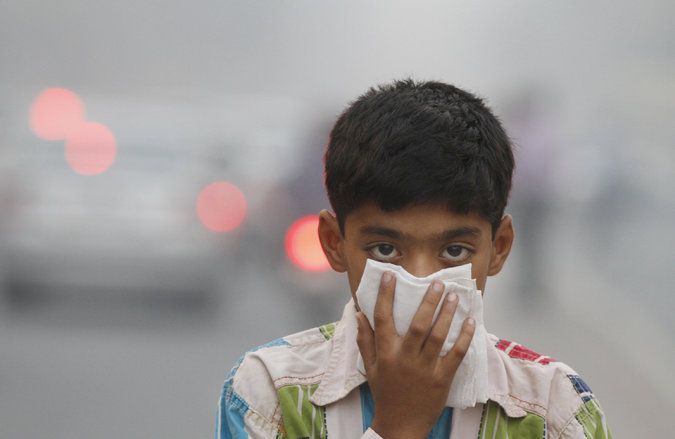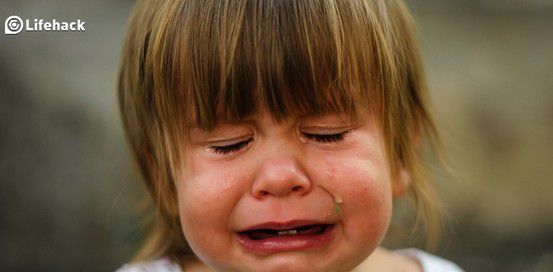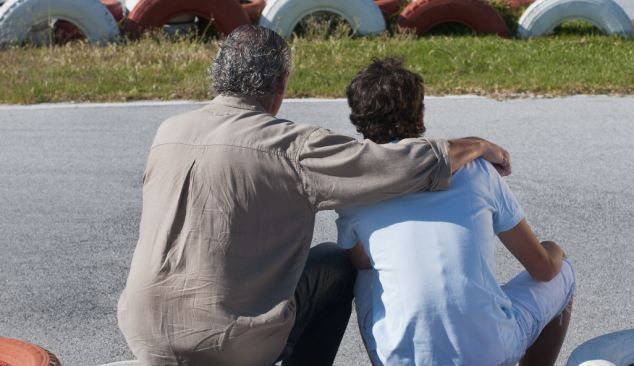世界上雾霾最严重的城市(双语)
|
爱思英语编者按:对于大多数衣食无忧的中国人来说,空气污染可能是目前生活中面临的最大问题。在北京这样的城市,尤其是冬季的时候,PM2.5指数经常爆表,这座原本让许多人热爱的城市顷刻之间换上狰狞的面目。很多人开始考虑离开,但是更多的人迫于各种现实的因素,只能无奈地留下来。 不过,放在全世界范围内,北京并不是污染最严重的城市。包括孟买和新德里在内的许多印度城市,污染的程度要远远超过北京。 就在这个礼拜,《纽约时报》驻新德里的记者Gardiner Harris放弃驻外记者优厚的待遇,离开印度回美国工作。临行前他写了一篇文章,详细讲述了自己作出这个决定的原因——新德里的空气污染极度严重,他的小儿子患上了严重的哮喘,肺部功能出现了终生无法恢复的损伤。 他描绘的新德里,让人望而生畏,宛如地狱。那里一半的学龄儿童肺部受损;孩子们踢球的场边,人工呼吸器扔满了一地;外籍人士纷纷逃离,甚至让那里的美国学校面临招生不足。他不无悲愤地这样写道:“在北京,PM2.5值超过500就会登上国际媒体的头条;而德里的数值是北京的两倍,却基本上无人在意。” 我很想把这篇文章分享给所有人,所以就动手把它翻译了出来。我觉得这是每一个同样遭受空气污染威胁的北京人和中国人都应该读一读的文章——不是为了庆幸,至少我们还不是最糟糕的地方;而是为了警醒,如果再不采取措施,后退一步,我们的背后就是德里式的深渊。
Holding Your Breath in India 作者 / Gardiner Harris FOR weeks the breathing of my 8-year-old son, Bram, had become more labored, his medicinal inhaler increasingly vital. And then, one terrifying night nine months after we moved to this megacity, Bram’s inhaler stopped working and his gasping became panicked. My wife called a friend, who recommended a private hospital miles away. I carried Bram to the car while my wife brought his older brother. India’s traffic is among the world’s most chaotic, and New Delhi’s streets are crammed with trucks at night, when road signs become largely ornamental. We undertook one of the most frightening journeys of our lives, with my wife in the back seat cradling Bram’s head. When we arrived, doctors infused him with steroids (and refused to provide further treatment until a $1,000 charge on my credit card went through). A week later, Bram was able to return home. When I became a South Asia correspondent for The New York Times three years ago, my wife and I were both excited and prepared for difficulties — insistent beggars, endemic dengue and summertime temperatures that reach 120 degrees. But we had little inkling just how dangerous this city would be for our boys. We gradually learned that Delhi’s true menace came from its air, water, food and flies. These perils sicken, disable and kill millions in India annually, making for one of the worst public health disasters in the world. Delhi, we discovered, is quietly suffering from a dire pediatric respiratory crisis, with a recent study showing that nearly half of the city’s 4.4 million schoolchildren have irreversible lung damage from the poisonous air. For most Indians, these are inescapable horrors. But there are thousands of others who have chosen to live here, including some trying to save the world, others hoping to describe it and still others intent on getting their own small piece of it. It is an eclectic community of expatriates and millionaires, including car executives from Detroit, tech geeks from the Bay Area, cancer researchers from Maryland and diplomats from Dublin. Over the last year, often over chai and samosas at local dhabas or whiskey and chicken tikka at glittering embassy parties, we have obsessively discussed whether we are pursuing our careers at our children’s expense. Foreigners have lived in Delhi for centuries, of course, but the air and the mounting research into its effects have become so frightening that some feel it is unethical for those who have a choice to willingly raise children here. Similar discussions are doubtless underway in Beijing and other Asian megacities, but it is in Delhi — among the most populous, polluted, unsanitary and bacterially unsafe cities on earth — where the new calculus seems most urgent. The city’s air is more than twice as polluted as Beijing’s, according to the World Health Organization. (India, in fact, has 13 of the world’s 25 most polluted cities, while Lanzhou is the only Chinese city among the worst 50; Beijing ranks 79th.) So many of our friends have decided to leave that the American Embassy School — this city’s great expat institution — is facing a steep drop in admissions next fall. My pastor, who ministers to a largely expat parish here, told me he feared he would lose 60 percent of his congregants this summer. We nearly left two years ago, after Bram’s first hospitalization. Even after his breathing stabilized, tests showed that he had lost half his lung function. On our doctor’s advice, we placed him on routine steroid therapy and decided that as long as his breathing did not worsen again, we could stay in Delhi. Or at least I decided that. My wife seriously considered flying home immediately, and at the end of a summer visit to the United States with the kids months later, sobbed for hours on the return flight to Delhi. But after our second year here, Bram seemed fine. His earlier difficulties, though, led me to call some leading air pollution experts. The conversations were sobering. “Knowing that I was putting my kids in a place that compromised their health for their lifetimes would be very difficult given all of the scientific evidence,” said W. James Gauderman, a professor of preventive medicine at the University of Southern California. He is the co-author of a landmark 2004 study showing that children raised in parts of Los Angeles — where pollution levels are a fraction of Delhi’s — face significant and probably permanent losses of lung function. Even children who move to less polluted places during childhood never seem to entirely recover from earlier high pollution exposures, another study found. Sarath Guttikunda, one of India’s top pollution researchers, who moved to Goa, on the west coast of India, to protect his two young children, was unequivocal: “If you have the option to live elsewhere, you should not raise children in Delhi.” These and other experts told me that reduced lung capacity in adults is a highly accurate predictor of early death and disability — perhaps more than elevated blood pressure or cholesterol. So by permanently damaging their lungs in Delhi, our children may not live as long. And then there are nascent areas of research suggesting that pollution can lower children’s I.Q., hurt their test scores and increase the risks of autism, epilepsy, diabetes and even adult-onset diseases like multiple sclerosis. C. Arden Pope III, a professor of economics at Brigham Young University and a leading expert on the health consequences of air pollution, noted that accurate pollution monitors have existed only since the 1980s. “If Delhi’s readings aren’t the highest ever, they’re among the highest ever,” he said. “Certainly no city in the United States, including Los Angeles, has ever come close.” That means the extent of the damage Delhi is doing to our children can only be guessed, he said. Several medical ethicists said it would be impossible to get approval for a clinical trial to send a group of children to Delhi to monitor their health. “Not a chance,” said Adil E. Shamoo, editor in chief of Accountability in Research and a bioethicist at the University of Maryland School of Medicine. “It’s O.K. to survey people already there, but moving children into harm’s way? No.” And children are by no means the only ones harmed. Many adults suffer near-constant headaches, sore throats, coughs and fatigue. Arvind Kejriwal, Delhi’s chief minister, had to leave the city for 10 days in March to cure a chronic cough. It’s not just the air that inflicts harm. At least 600 million Indians, half the total population, defecate outdoors, and most of the effluent, even from toilets, is dumped untreated into rivers and streams. Still, I never thought this would come home to my family quite as dramatically as it did. We live in a four-year-old, five-story apartment building that my wife chose because its relatively new windows could help shut out Delhi’s appalling nighttime air. Its cookie-cutter design — by the same developer who built dozens of others in the neighborhood — gave us confidence that things would function, by no means assured for new construction here. About six months after we moved in, one of our neighbors reported that her tap water suddenly smelled like sewage. Then the smell hit another neighbor and another. It turned out that the developer had dug open channels for sewage that had gradually seeped into each apartment’s buried water tank. When we pulled up the floor tiles on the ground floor, brown sludge seemed to be everywhere. I was in the shower when this sewage mixture arrived in our apartment. Sounds horrible, but I shrugged and toweled off because that smell is such a frequent presence here. For much of the year, the Yamuna River would have almost no flow through Delhi if not for raw sewage. Add in the packs of stray dogs, monkeys and cattle even in urban areas, and fresh excretions are nearly ubiquitous. Insects alight on these excretions and then on people or their food, sickening them. Most piped water here is contaminated. Poor sanitation may be a crucial reason nearly half of India’s children are stunted. The list of health threats sounds harrowing when considered together, but life goes on and can be quite nice here. Our apartment building eventually installed aboveground water tanks. My children’s school and travel in the region are terrific, and many expats are far more influential here than they would be in their home countries. Yet one afternoon this spring, someone in our neighborhood burned something toxic, and an astringent cloud spread around our block. My wife was out walking with a friend, and their eyes became teary and their throats began to close. They bolted back inside our apartment where they found Bram gasping again, for the first time in two years. In some places in Delhi, the levels of fine particles that cause the most lung damage, called PM2.5, routinely exceed 1,000 in winter in part because small trash and other fires are so common, according to scientists. In Beijing, PM2.5 levels that exceed 500 make international headlines; here, levels twice that high are largely ignored. But Bram notices. He spent the next five days at home, with my wife giving him heavy doses of inhaled steroids through a mask. He has a quiet sadness during these crises, perhaps because they force him to accept the idea that his health is more fragile than that of his brother or friends. Before coming to Delhi, Bram had had a couple of breathing episodes that doctors assured us he would most likely outgrow. Now he has full-blown asthma and must take powerful daily medications. Would he have developed asthma if we had stayed in the United States? Pediatric asthma is far more likely to start and worsen in polluted locales. The sidelines at kids’ soccer games here are littered with inhalers. Ruth R. Faden, director of the Johns Hopkins Berman Institute of Bioethics, said children have a special claim to protection. “First, because they are so dependent on us for their well-being, and second because deprivations in childhood have such an outsize effect,” she said. There is a growing expatriate literature, mostly out of China, describing the horrors of air pollution, the dangers to children and the increasingly desperate measures taken for protection. These accounts mostly end with the writers deciding to remain despite the horrors. Not this one. We are moving back to Washington this week. The boys are excited. Aden, 12, wants a skateboard and bicycle, accouterments of freedom in a place he is allowed to wander by himself. His younger brother’s wish may be harder to realize. “My asthma will go away,” Bram said recently. “I hope so, anyway.” 几个星期以来,我8岁的儿子Bram的呼吸变得越来越困难,医用呼吸器对他来说也越来越重要。在我们搬到这个巨大都市九个月之后的某一个可怕的夜晚,Bram的呼吸器停止了运作,他的气喘让人恐慌。 我太太给一个朋友打了电话,他推荐我们去几英里外的一家私立医院。我抱着Bram上了车,我太太则领着Bram的哥哥。印度的交通在全世界范围内都算得上混乱,新德里的街道在晚上挤满了卡车,而交通标志则基本上只是装饰品。我太太抱着Bram的头坐在后座,我们就这样经历了一生之中最担惊受怕的一段路程。 到了医院以后,医生给Bram注射了类固醇(在我用信用卡支付了1000美元的费用之前,他们拒绝给Bram做进一步的治疗)。一个星期以后,Bram终于能够回家了。 三年前,我成为《纽约时报》的南亚驻站记者,太太和我都非常激动,并且开始为可能遇到的困难做准备——缠着人不肯走的乞丐,登革热传染病,还有在夏天高达120华氏度的高温(相当于48.9摄氏度)。但是我们根本没有想到,这座城市对于我们的孩子到底有多危险。 我们逐渐了解到,德里真正的威胁来自于空气,水,食物和苍蝇。每年,印度都有数百万人因此生病,残疾,乃至死去,德里因此成为世界上最可怕的公共卫生灾区之一。我们发现,德里正在安静地经历一场儿童呼吸道系统疾病的危机。最近的一项研究发现,有毒的空气已经对这座城市440万学龄儿童中将近一半孩子的肺部造成了不可逆的损害。 对于大多数印度人来说,这些是无法逃脱的厄运。但是除此之外还有成千上万选择来到这里生活的外来人,其中有些人努力拯救世界,另外一些人希望能够亲身感受,更有一些人想要成为这里的一部分。这是一个由外籍工作人员和百万富翁所自发形成的社区,其中包括来自底特律的汽车公司高管,加州湾区的技术大牛,马里兰州的癌症研究人员,以及都柏林的外交官。在过去一年,坐在路边小餐馆里喝着印度茶、吃着三角饺的时候,或者在高朋满座的大使馆招待会上喝着威士忌、吃着鸡肉提卡(chicken tikka,一种常见的印度菜)时,我们总是会不由自主地讨论,自己是不是为了追求职业前途而让我们的孩子被迫付出代价。 当然,外国人在德里已经居住了几个世纪。可是,这里的空气和逐渐开始的对其危害的研究已经变得如此可怕,让很多选择在这里抚养孩子的人觉得自己作了一个不道德的选择。毫无疑问,相同的讨论在北京和亚洲其他一些巨型城市里都会出现,可是在德里——地球上人口最密集、污染最严重、卫生状况最恶劣、细菌安全问题最严重的城市之一,这样的考虑是最迫切的。根据世界卫生组织的数据,这里的空气污染程度是北京的两倍。(事实上,全世界25个污染最严重的城市有13个在印度,兰州是污染最严重的50个城市里唯一的中国城市;北京排名79。) 我们的很多朋友都已经决定离开德里,以至于美国大使馆附属学校——一个非常棒的外籍员工子弟学校——在今年秋季面临着入学人数的急剧下降。我的牧师负责一个基本上由外籍员工组成的教区,他告诉我说,他认为今年夏天他的教众人数将下降60%。 两年前,在Bram第一次住院后,我们差点就离开了这里。即使在他的呼吸状况逐渐稳定以后,检查发现他的肺功能已经丧失了一半。在医生的建议下,我们让他定期接受类固醇治疗,并且决定只要他的呼吸状况不再恶化,我们就留在德里。 或者至少,是我这么决定的。我的太太非常认真地考虑过要立即飞回家。那个夏天她带着孩子回美国呆了几个月,在回德里的飞机上,她哭了几个小时。 我们在这里过了两年之后,Bram的状况看起来还不错。不过鉴于之前他出现的那些健康问题,我还是给不少顶尖的空气污染问题专家打了电话,他们的话让我如梦方醒。 “在科学证据面前,意识到我把自己的孩子放在一个会对他们的健康造成终身伤害的地方成长,这是一件十分痛苦的事,” 南加州大学预防医学教授W. James Gauderman说。2004年,他作为共同作者发表了一项研究,指出在洛杉矶(那里的空气污染程度只是德里的几分之一)部分地区长大的孩子面临着严重的、可能是永久性的肺功能丧失。另外一项研究发现,在高污染空气中生活过的孩子,即使后来搬到污染较轻的地方,他们的健康也永远不可能完全恢复。 Sarath Guttikunda是印度最好的污染研究专家之一,为了保护自己的两个小孩,他搬到了印度西海岸城市果阿。他斩钉截铁地说:“如果能够选择去别的地方,你绝对不应该让孩子在德里长大。” 他们以及其他一些专家告诉我,成年人肺容量指标的下降是预示早死和残疾的一个非常准的信号,比血压升高和胆固醇升高还要准。我们的孩子在德里经受的肺部损伤,也许会让他们没办法长寿。 此外,还有一些最近才兴起的研究发现,污染能够降低孩子的智商,影响考试成绩,同时增加患自闭症、癫痫和糖尿病的几率,甚至会让他们患上通常只有成年人才会出现的血管硬化。 杨百翰大学(Brigham Young University)经济学教授C. Arden Pope III是空气污染对健康影响领域的顶尖专家,他指出精确的污染监测直到上世纪80年代才开始出现。“就算德里的污染指数不是人类有史以来最高,那也是有史以来最高之一,”他说,“绝对没有任何美国城市,包括洛杉矶,可以与之相提并论。”
有害的不只是空气。印度至少有6亿人在室外排便,占人口的一半。大多数废水、甚至包括冲马桶的水,没有经过任何处理就被排放到河流里。即使是这样,我也没有想到,有一天这一切会以如此戏剧性的方式影响到我的家。 我们住在一栋四年前建的五层公寓楼里。我太太挑的这个地方,因为窗户比较新,能够在晚上把德里让人恐惧的空气挡在外头。 大概在我们搬进来六个月的时候,其中一个邻居报告说她家的水闻起来像是污水。然后,一个又一个邻居闻到了污水的味道。后来发现,房屋开发商凿开了下水管道,污水逐渐渗透进了每家埋在地下的储水箱里。我们掀开底楼的地板,褐色的污水似乎到处都是。 这样的污水混合物进入我们家公寓的时候,我正在洗澡。听起来很恐怖,但我当时只是耸了耸肩膀,用毛巾擦干了身体,因为那样的气味似乎一直都有。 如果不是这样的污水,亚穆纳河在一年中的大多数时候都几乎断流。即使是在城市里,也有成群的流浪狗,猴子和牛,新鲜的排泄物几乎随处可见。虫子落脚在这些排泄物上,然后又落脚在人或者他们的食物上,从而带来了疾病。 这里大部分自来水都受到了污染。恶劣的卫生状况可能是造成印度近一半儿童发育不良的主要原因。 这样的列举听起来很悲惨,可是这里的生活在继续,有时候也很美好。我们的公寓楼最终安装上了地上储水箱,我们孩子的学校非常棒,在这里的旅行体验也非常棒,而且这里许多外籍工作人员赚的钱要比在自己国家工作多的多。 可是今年春天的一个下午,我们居住区里有人在烧一些有毒的东西,刺鼻的烟雾到处升腾。我太太当时正和一个朋友在外面散步,她们的眼睛开始流泪,喉咙也堵住了。她们飞快地冲回家,发现Bram又在大口喘气,这样的情况是两年来的第一次。在德里的一些地方,对肺造成伤害最严重的微细颗粒(称为PM2.5)的值在冬天通常会超过1000,科学家说部分原因是因为这样的垃圾焚烧非常常见。在北京,PM2.5值超过500就会登上国际媒体的头条;而这里的数值是北京的两倍,却基本上无人注意。 可是,Bram注意到了。那之后的五天,他呆在家里,我太太让他戴着口罩服用高剂量的吸入型类固醇。 在来德里以前,Bram就有过呼吸问题,医生让我们放心,说他会自己康复。现在,他的哮喘非常严重,必须每天服药。如果我们留在美国,他会得哮喘吗?在污染地区,儿童哮喘发生和变严重的可能性要高得多。在德里,儿童足球比赛场地的边线外,扔满了人工呼吸器。 越来越多的文学作品开始描述空气污染的恐怖之处、儿童所遭受的污染威胁以及越来越如临大敌的保护措施,其中大部分来自在中国工作的外籍人士。大部分的此类作品,最终结局都是尽管面临如此严重的威胁,但是作者仍然决定留在当地工作。 但是,我这一篇作品不会如此结束。这个星期,我们就要搬回华盛顿。 孩子们非常激动。12岁的Aden想要滑板和自行车,在一个他可以自己到处乱逛的地方,那些东西是象征自由的装备。而他弟弟的愿望要实现起来可能会比较难一点。 “我的哮喘会好的,” 最近Bram这么说,“至少,我希望是这样。” |









